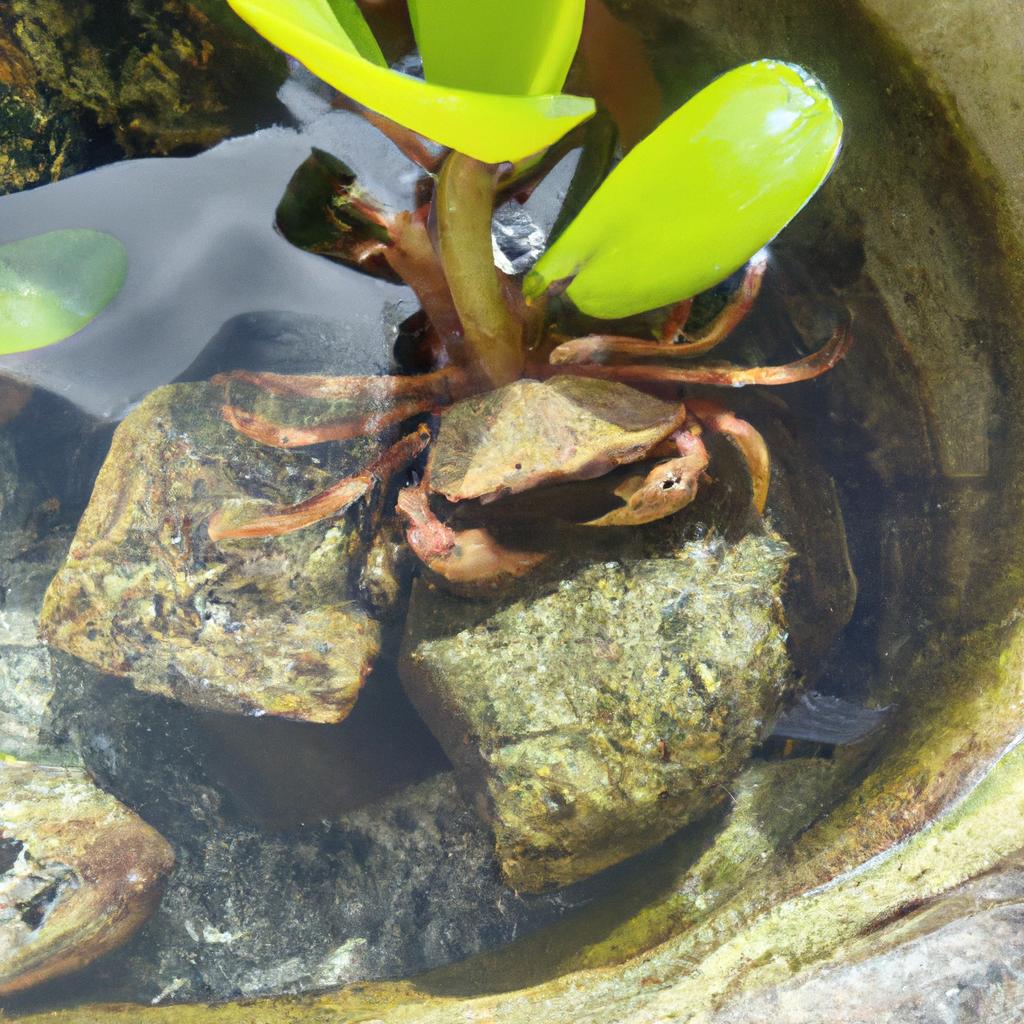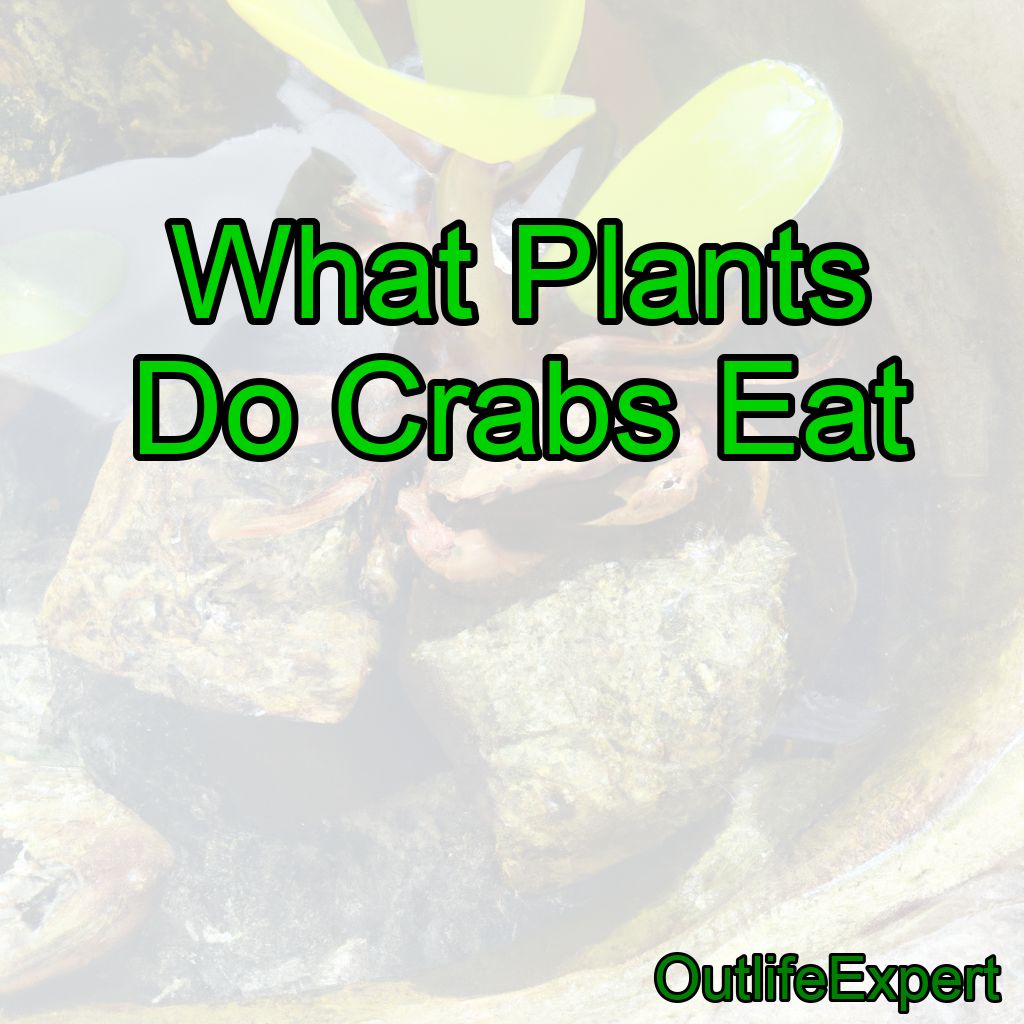As a lifelong marine enthusiast, I have always been fascinated with the diverse world of underwater creatures. One of the most interesting creatures that I have come across are crabs.
They are unique in their appearance, behavior, and diet. In my quest to understand the underwater world better, I’ve spent countless hours researching and observing the feeding habits of these crustaceans.
Well, I’m here to share my knowledge and personal experience with you. So, let’s dive deep into the world of crabs and find out more about their plant-based diet.
Contents
Types of Crabs and Their Habitats
Before we delve into the plant-deprived diet of crabs, it’s essential to understand the different types of crabs and their habitats. There are over 4500 species of crabs, which can be found in various environments such as oceans, freshwater, and land.
Some common types of crabs include:
1. Hermit crabs
2. Fiddler crabs
3. Blue crabs
4. Dungeness crabs
5. King crabs
Each species has its own unique characteristics and dietary preferences.
However, one common trait among all crabs is their scavenging nature, which means they feed on a wide variety of food sources.
The Omnivorous Nature of Crabs
Crabs are generally omnivorous, which means they eat both plants and animals. Their diet mainly consists of algae, plankton, mollusks, small fish, and detritus (dead plants and animals).
However, their plant consumption is relatively low compared to their animal-based diet.
1. Algae: A Staple in a Crab’s Plant-Based Diet
The primary plant-based food source for crabs is algae. Algae are simple plants that grow in water and can be found in oceans, freshwater, and even brackish water.
There are several types of algae, but the most common ones that crabs consume are green algae and red algae.
Crabs like to graze on these algae as they provide essential nutrients and are easily accessible.
2. Seagrasses: A Secondary Plant Food Source for Crabs
Another type of plant crabs occasionally eat is seagrasses. Seagrasses are flowering plants that grow underwater in shallow coastal areas.
They provide a habitat for various marine species, including crabs. Blue crabs, in particular, have been observed to feed on seagrass, but this makes up a small portion of their diet.
3. Mangroves: A Land-Based Plant Source for Crabs
Crabs that inhabit mangrove forests, such as the mangrove tree crab, have been known to consume parts of the mangrove tree, including its leaves and bark. Though not a primary food source, mangrove foliage offers crabs an alternative when other food resources are scarce.
The Role of Plant Consumption in a Crab’s Diet
While plant-based food sources like algae, seagrasses, and mangroves are part of a crab’s diet, they contribute minimally to their overall food consumption.

Crabs primarily rely on animal-based food sources for their energy and nutritional needs.
The Impact of Habitat on a Crab’s Diet
A crab’s habitat plays a significant role in determining its diet.
For example, crabs living in freshwater or land environments have limited access to marine plants like algae and seagrasses.
Therefore, their plant consumption would be even lower than that of marine crabs.
In contrast, crabs in coastal areas with abundant seagrass and algae have a higher chance of consuming plant-based foods.
Diet Variation Among Different Crab Species
As mentioned earlier, there are numerous crab species with varying dietary preferences.
Some crabs, like fiddler crabs, are primarily herbivorous and feed mostly on algae and detritus.
Others, like the king crab, are carnivorous and prefer to consume animal-based food sources.
Conclusion: What Plants Do Crabs Eat?
To sum it up, crabs primarily consume algae, with seagrasses and mangroves being secondary plant sources in their diet.However, their plant consumption is relatively low compared to their animal-based diet.
The type of crab, its habitat, and the availability of food resources dictate the proportion of plant-based food consumed by crabs.
So, while crabs do eat plants, it’s essential to remember that they are omnivorous and rely heavily on animal-based food sources for their nutrition and energy needs.
FAQs
Do any crabs primarily eat plants?
Yes, some species of crabs do eat plants as part of their diet, such as mangrove crabs which feed on mangrove leaves and roots. However, the majority of crabs are omnivorous or carnivorous and primarily feed on other animals or decaying matter.
What is a crab’s favorite food?
Crabs are omnivores and will eat a variety of foods including algae, mollusks, small fish, and even detritus.
Do crabs eat live prey?
Yes, crabs are carnivorous and often eat live prey such as fish, clams, and other crustaceans.
Is A crab A Predator or a Prey?
A crab can be both a predator and a prey, depending on its size and the environment it lives in. Small crabs may be preyed upon by larger predators, while larger crabs may hunt and prey on smaller animals.
What should you not feed crabs?
You should not feed crabs anything that is toxic or spoiled, including rotten or moldy food, citrus fruits, avocado, chocolate, and alcoholic beverages.
What fruit do crabs eat?
Crabs are opportunistic feeders and will eat a variety of foods including fruits such as berries, mangos, and bananas, but their diet mainly consists of small fish, mollusks, and crustaceans.




